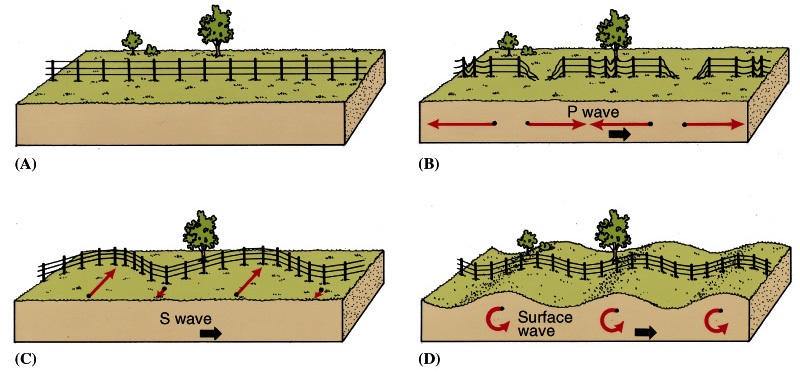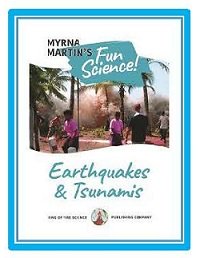S waves are seismic waves
s waves and p waves
Two types of seismic waves
S waves and P waves are the two types of seismic waves produced by all earthquakes. P waves are primary waves because they arrive at seismic reporting stations first. These shear waves are secondary waves because they travel at slightly slower speeds and are the second set of seismic waves recorded on seismographs. Scientists use the difference in time to determine the earthquake focus and epicenter.

Movement of three types of earthquake waves USGS
How and where s waves travel
Shear waves
Shear waves move in a back and forth motion as they travel through the Earth. This movement causes the rock particles to be displaced at right angles. This displacement causes the rocks to shear. These waves are also referred to as shear waves. P waves travel through solids liquids and gases.
Where shear waves travel
Shear waves only travel through solids and dissipate when they reach a liquid. The waves also travel at different speeds in different densities of rocks.


Click for More Information and to Order
Finding boundaries inside earth
Travel speed through the crust
Shear waves travel through the crust of the Earth at speeds between 2.0 and 4.2 km/sec. They speed up when they reach the Moho boundary which separates the crust from the mantle.
Moving through the mantle
In the mantle S waves travel between 4.5 and 4.9 km/sec depending on the density of the rocks. P waves travel in the crust between 1.5 and 8.0 km/sec. In the crust they increase their speed up to 8.5 km/sec.
Body waves
Since both these seismic waves travel through the body of the Earth they are called body waves. Scientists using the changing speeds of the waves first determined the Moho boundary.
Outer and inner core of the Earth
The outer liquid core and the inner solid core were discovered later. Most of what we know today about the inside of the Earth has been discovered by seismologists studying earthquake waves.
KIDS FUN Science Bookstore
Check out Myrna Martin's award winning textbooks, e-books, videos and rock sets. The Kids Fun Science Bookstore covers a wide range of earth science topics. Click here to browse.










